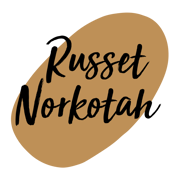
Potato Varieties
Availability varies by season and location.
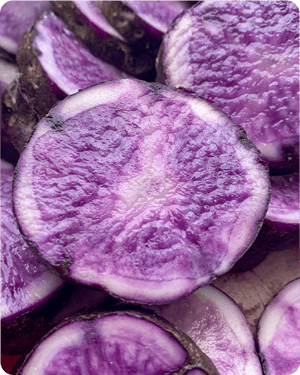
Characteristics:
- Disease Resistance: Good resistance to Late Blight & Hollow Heart
- Maturity: 90 days
- Planting dates: Spring after the danger of frost is past
- Seed Potatoes: Cut potatoes into pieces with 2 to 3 eyes per piece
SKU: 87679
See: How to Grow>>
Characteristics:
- Disease Resistance: Excellent resistance to Scab
- Maturity: 60 (new potatoes) - 90 days
- Planting dates: Spring after the danger of frost is past
- Seed Potatoes: Cut potatoes into pieces with 2 to 3 eyes per piece
SKU: 4050
See: How to Grow>>
Characteristics:
- Disease Resistance: Good resistance to Scab, Late Blight and common viruses
- Maturity: 85 days
- Planting dates: Spring after the danger of frost is past
- Seed Potatoes: Cut potatoes into pieces with 2 to 3 eyes per piece
SKU: 56098
See: How to Grow>>
Characteristics:
- Disease Resistance: Good resistance to Scab and Verticillium Wilt
- Maturity: 80-95 days
- Planting dates: Spring after the danger of frost is past
- Seed Potatoes: Cut potatoes into pieces with 2 to 3 eyes per piece
SKU: 812414
See: How to Grow>>
Characteristics:
- Disease Resistance: Good resistance to Late Blight
- Maturity: 80 days
- Planting dates: Spring after the danger of frost is past
- Seed Potatoes: Cut potatoes into pieces with 2 to 3 eyes per piece
SKU: 4023
See: How to Grow>>
Characteristics:
- Disease Resistance: Good resistance to most viruses
- Maturity: 80-100 days
- Planting dates: Spring after the danger of frost is past
- Seed Potatoes: Cut potatoes into pieces with 2 to 3 eyes per piece
SKU: 58431
See: How to Grow>>
Characteristics:
- Disease Resistance: Good resistance to Scab and Leafhoppers
- Maturity: 90-100 days
- Planting dates: Spring after the danger of frost is past
- Seed Potatoes: Cut potatoes into pieces with 2 to 3 eyes per piece
SKU: 87689
See: How to Grow>>
Characteristics:
- Disease Resistance: Good resistance to Early Blight
- Maturity: 80-100 days
- Planting dates: Spring after the danger of frost is past
- Seed Potatoes: Cut potatoes into pieces with 2 to 3 eyes per piece
SKU: 4053
See: How to Grow>>
Characteristics:
- Disease Resistance: Good resistance to Late Blight and common viruses
- Maturity: 80 days
- Planting dates: Spring after the danger of frost is past
- Seed Potatoes: Cut potatoes into pieces with 2 to 3 eyes per piece
SKU: 4035
See: How to Grow>>
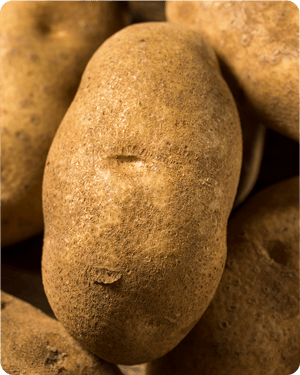
Characteristics:
- Disease Resistance: Good resistance to Scab and Black Leg
- Maturity: 85-95 days
- Planting dates: Spring after the danger of frost is past
- Seed Potatoes: Cut potatoes into pieces with 2 to 3 eyes per piece
SKU: 4009
See: How to Grow>>
Characteristics:
- Good in uneven soil moisture
- Maturity: 85 days
- Planting dates: Spring after the danger of frost is past
- Seed Potatoes: Cut potatoes into pieces with 2 to 3 eyes per piece
SKU: 4028
See: How to Grow>>
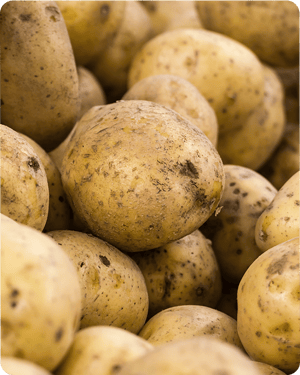
Characteristics:
- Good storing variety
- Maturity: 60-80 days
- Planting dates: Spring after the danger of frost is past
- Seed Potatoes: Cut potatoes into pieces with 2 to 3 eyes per piece
SKU: 4154
See: How to Grow>>
Potato Plant Care
Potato plants will need deep and regular irrigation throughout the growing season. Consider using organic mulches to conserve water, reduce weeding and keep soil cool.
As the potatoes grow you will want to “hill” or “mound” the plants about two weeks after planting. Do this by building up dirt around the base of the plant to prevent the potatoes from growing out of the soil.
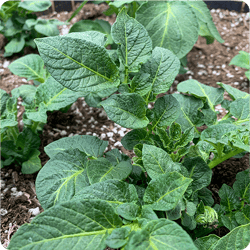
Harvesting Potatoes
Potatoes can be harvested early for use as “new potatoes” or left until they reach maturity. Mature potatoes for storage should be harvested after the vines have died and left to rest in the ground for 2-3 weeks. This allows the potatoes to “cure” or form a harder skin that helps them to store better for longer.
Harvest using a shovel or spading fork to loosen the soil about 18 inches away from the plant to avoid damaging the potatoes.
Learn more about potato care, harvesting and best ways to store
Helpful Tools
Organic Matter (Compost):
Compost or another form of organic material is a good way to improve soil drainage as well as regulate soil temperature and moisture levels.
Fertilizer:
Planting – Phosphate does not move through the soil after planting and is essential for potato growth. So consider working Fertilome Tomato and Vegetable Food (7-22-8), Bone Meal (0-10-0) or IFA 11-52-0 Granular Fertilizer into the soil when planting.
Growing – Fertilize again once the potato plants have grown out of the soil. You can side dress (apply to the side of the plant and water in) or lightly broadcast and water in an all-purpose garden fertilizer. IFA Garden Fertilizer (16-16-8) or IFA Grand Champion (16-16-16) are great options.
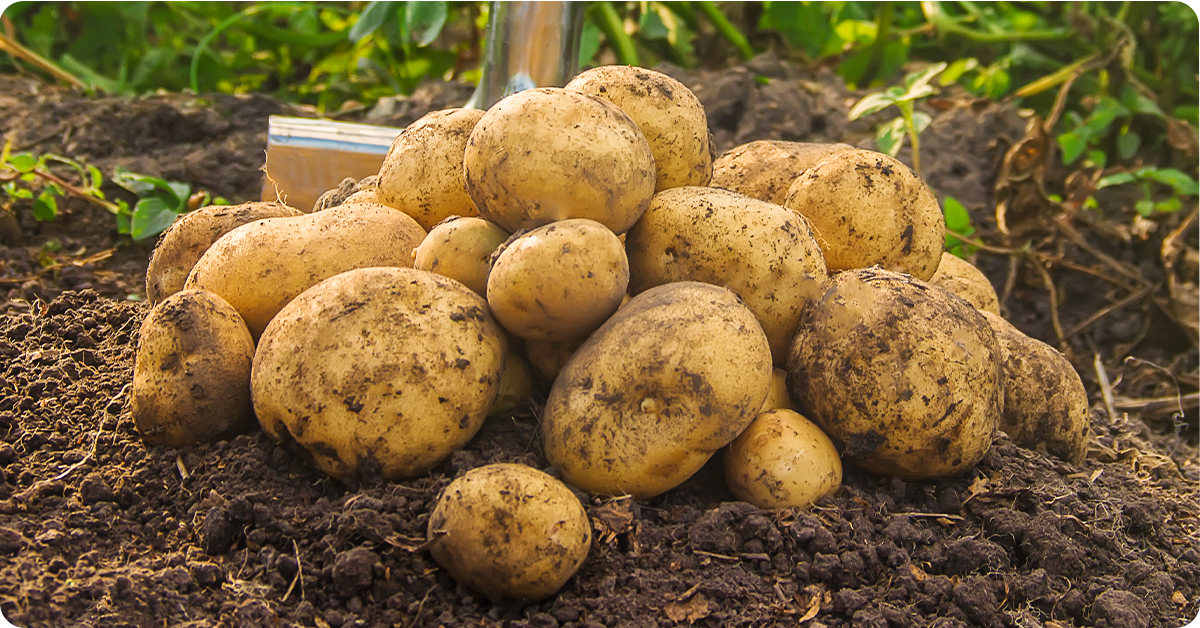
IFA’s Growing Guide for a Plentiful Potato Harvest
Enjoying a bountiful potato harvest starts with selecting the right seed potatoes. Learn about common potato types and how to plant, harvest, and store them.
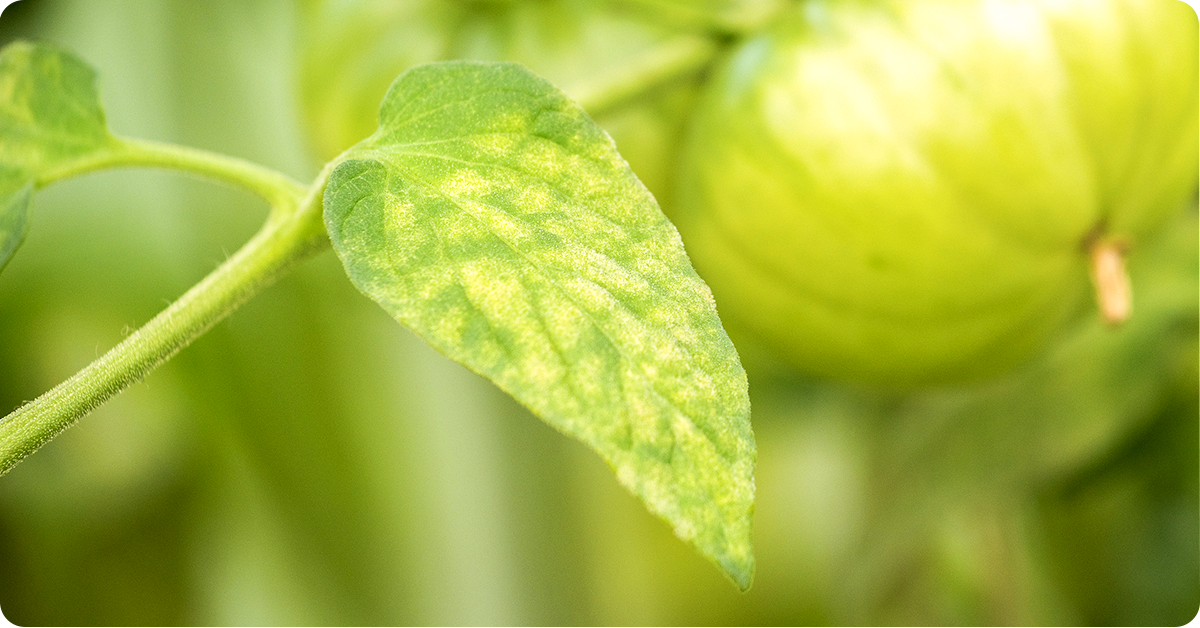
8 Reasons Plant Leaves Turn Yellow
Soil is vital for a productive garden and not all soils are the same. Find out how soil amendments can help your soil and your garden harvests.
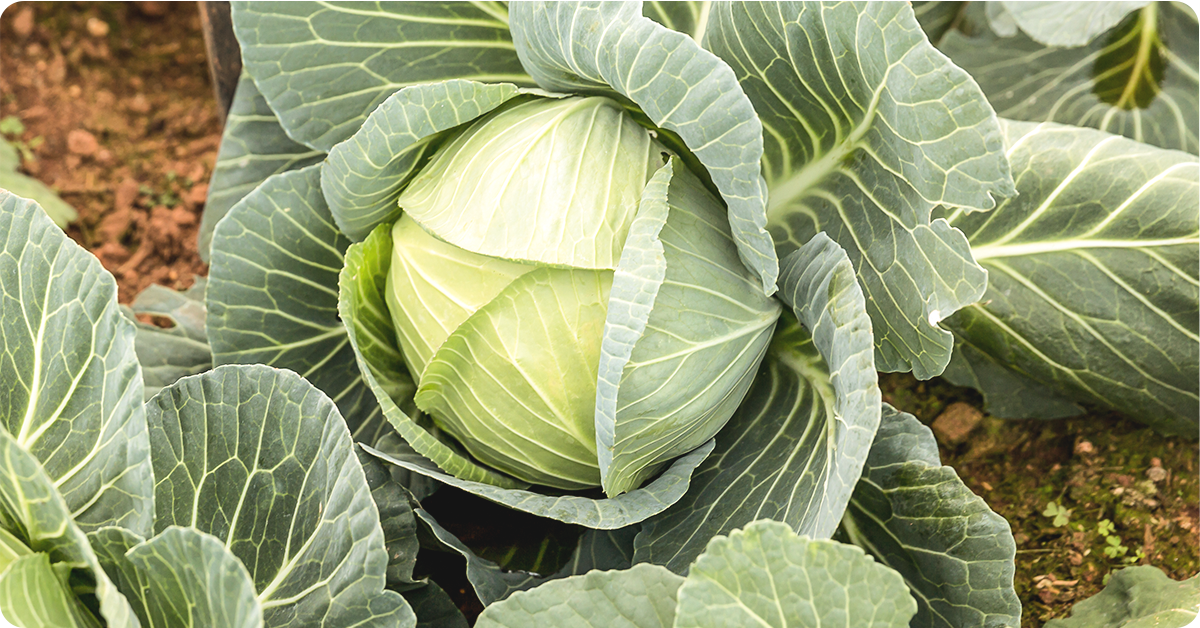
Early Spring Gardening: What to Plant and When
Despite lingering winter weather conditions, it’s still possible and important to get started early on planting your spring vegetables.












